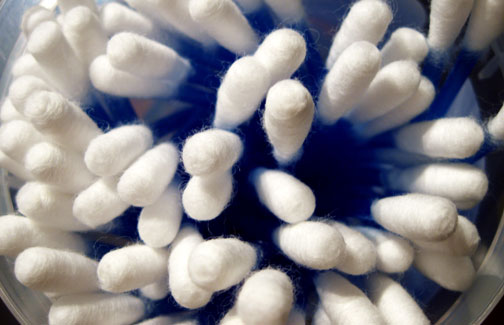No, we are not talking about the rap artist. We are talking about the well-known cotton swab brand. For many, the word q-tip has generalized to refer to all cotton swabs, cotton tipped applicators, ear buds, and cotton buds – like xerox is to copier or kleenex is to tissue. But we digress. The q-tip is perhaps most commonly known as the bathroom tool that cleans one’s ears. But refer to the box instructions or go to their website and there are a plethora of suggested uses, none which include your ear wax buildup. So what are q-tips for?
Origin of The Q-tip and Cotton Swab
The cotton swab was invented in the 1920s by a man by the name of Leo Gerstenzang after he witnessed his wife applying wads of cotton to the ends of a toothpick in order to reach some “hard to clean areas.” Q-tips now are comprised with a small ball of cotton wrapped around one or both ends of a short stick usually made of wood, rolled paper, or even plastic. Special thanks to Mrs. Gerstenzang, but what was she cleaning?
What Q-tips are Officially Used For
According to the Q-tips cotton swab website, q-tips are practically the Swiss army knife of the medicine cabinet. The site raves, “perfect for cleaning down to the last detail!” There are pages dedicated to tips for how to incorporate q-tips into your daily beauty, first aid, cleaning, and arts and crafts routines. Of all the uses listed – from perfecting your lip stick application to cleaning your dog’s paws to getting between the keys of your keyboard – cleaning your ears makes no appearance. In fact, the box may even come with a warning: “do not insert swab into ear canal.”
And while they even have a Frequently Asked Questions page, you can bet your bottom that they have left the big question hanging: can I use q-tips to clean my ears?
What Q-tips are Actually Used For
The most common use for q-tips and cotton swabs is for ear cleaning. Some say that there is nothing quite like the feeling of using a q-tip to get that junk out of your ear canal after a warm shower (which shouldn’t surprise anyone given that the ear canal is full of nerve endings and is considered an erogenous zone). But why would the Q-tips website not even make mention of this common use? Because despite the normality, medical experts have consistently warned against using them inside the ear and, well, manufacturers are covering their behinds – legally speaking.
Q-tips and Medical Issues
Before getting to the vehement warnings of medical professionals, we must first address the issue of ear wax. Cerumen (the fancy word for ear wax) is a naturally occurring substance that protects the skin inside the ear canal and serves as a cleaning function. Though most q-tip devotees are using their favorite cotton swaps to remove or “clean” this cerumen from their ears, the cerumen itself is attempting to clean the inner ear and provide protection from bacteria, fungi, insects, and even water.
So while you may be attempting to do some cleaning yourself, you may be doing more harm than good. The use of q-tips inside the ear has been the leading cause of perforated or punctured eardrums, a painful and serious condition that can ultimately lead to chronic ear infections and even permanent hearing loss. But, we know, you’re careful not to stick that q-tip in too far. Well a perforated eardrum should not be your only worry. In fact, using a q-tip to remove ear wax may actually push the cerumen further into the ear canal. Beyond the silliness of removing a healthy, natural substance in an unnatural manner, using cotton swabs to clean inside the ear can also result in a buildup or blockage of ear wax in the ear canal causing pain, hearing problems, ringing in the ear, and even dizziness like vertigo.
So just as we warn young children not to stick small toys or parts up their noses, perhaps we should be reminding adults not to stick things in their ears. If you really need to find another use for all those q-tips, the Q-tips Tip Jar would be happy to help!
Need another reason to stop using q-tips in your ears? Check out this emphatic article by a family medicine PA.

